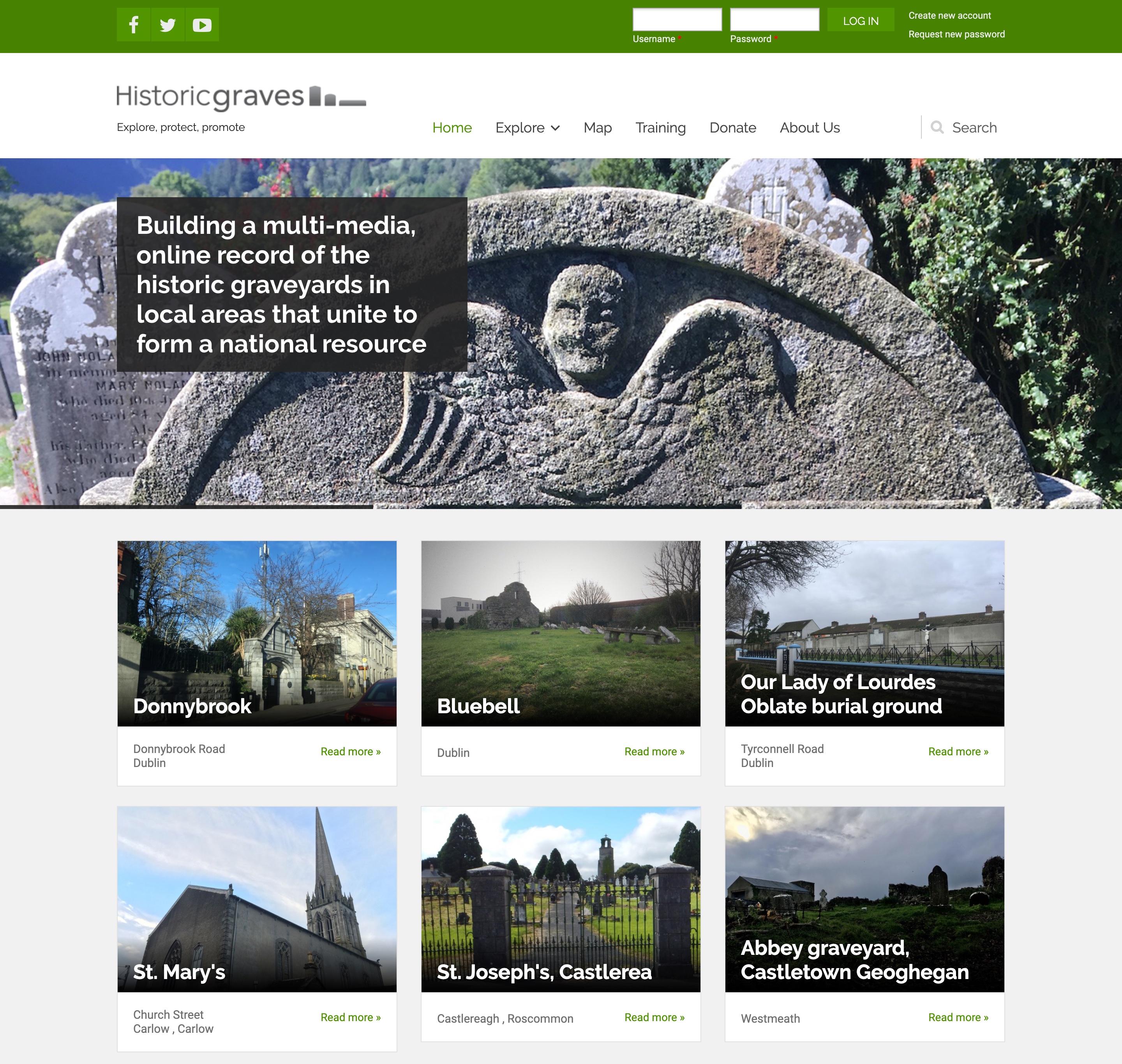1. Abstract
Irish diaspora is how we refer to the historical process of migration from Ireland, recorded since the Early Middle Ages, but particularly evident since the XVIII century. By the 21st century, according to figures in the Irish Emigration Patterns and Citizens Abroad report published in 2017 by the Irish Department of Foreign Affairs and Trade, an estimated 70 million people worldwide claimed some Irish descent, that largely maintain a connection with Irish cultural identity and heritage.
The online project Historic Graves (https://historicgraves.com/) capitalized on this global phenomenon, putting together a worldwide community of more than 15,000 users, collaborating in generating a nationwide genealogical dataset. The project began in 2010, from an idea of John Tierney developed by Maurizio Toscano, both still at the forefront of the initiative. It started and still runs as a community focused grassroots heritage project, where local community groups living in Ireland are trained in low-cost high-tech field survey of historic graveyards and recording of their own oral histories. In almost a decade, historicgraves.com published online more than 800 graveyards, recording at least a photo and the location of 99,235 graves and collaboratively transcribing the details of 199,851 people, and counting.
Community co-production happens within a freely available online platform, created for the transcription of memorial epitaphs. Training workshops are offered to local communities interested in contributing to surveying and transcribing historic graveyards. The combination of online interaction with local workshops and meetings works best in terms of ensuring meaningful participation. Data gathering and management procedures have proved to be essential on two fronts: data collected in the field is normally available online in short time; on the website, memorials’ transcription is unmediated and immediately available to share. Instant publication proved to be highly engaging for the volunteer groups involved: they see immediate results for their work and are willing to share them with family and friends living abroad. Each local community can then download individual datasets of their own records, as tabular Open Data. The global community of users takes responsibility for quality control and completeness.
In 2018, the project has received a Heritage Council grant, that supported the upgrading of the online platform (backend and frontend), and it has been part of the initiative European Year of Cultural Heritage (#EuropeForCulture). From a technical point of view, data, code and layout have been upgraded from Drupal 6 to Drupal 7, with a plan to move to BackdropCMS or Drupal 9 in late 2021, when both Drupal 7 and Drupal 8 will reach "End of Life".
The Historic Graves project is fundamentally a Public History project, originated from local communities and that constantly relies on them to grow, solve ethical issues and stay sustainable. Technologies, and the Web in particular, have played a big role, both enabling remote transcriptions and stimulating participation, although they never been the focus of the initiative. Additionally, in line with public digital humanities principles, the project has always been open to participation, well beyond the academy, growing as a group of networked and engaged communities, not just as a repository for content. 
References
- Irish Abroad Unit (IAU) (2017) Irish emigration patterns and citizens abroad. 20 June. Available at: https://www.dfa.ie/media/dfa/alldfawebsitemedia/newspress/publications/ministersbrief-june2017/1–Global-Irish-in-Numbers.pdf (accessed 14/06/2020)
- Tierney, John, Kiely, Jacinta, & Toscano, Maurizio. (2019). The Historic Graves project. A Community Archaeology of Families – A Call for Collaboration, in TEA. The European Archaeologist, ISSUE 60 - SPRING 2019, ISSN 1022-0135. Available at: https://www.e-a-a.org/EAA/Publications/Tea/Tea_60/Announcements/EAA/Navigation_Publications/Tea_60_content/Announcements.aspx#60_graves (accessed 14/06/2020)
- Toscano, Maurizio, & Tierney, John. (2016). Historicgraves.com: the online graves and graveyards finder. Zenodo. http://doi.org/10.5281/zenodo.3893694
- Toscano, Maurizio. (2019). Crowdsourcing Irish History. Zenodo. http://doi.org/10.5281/zenodo.3893803